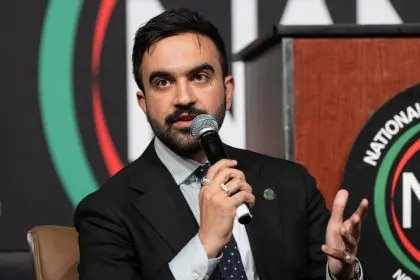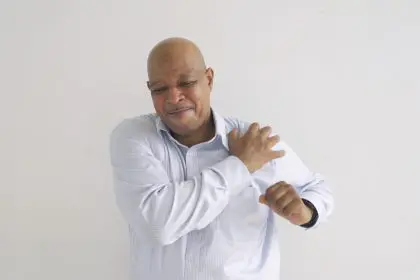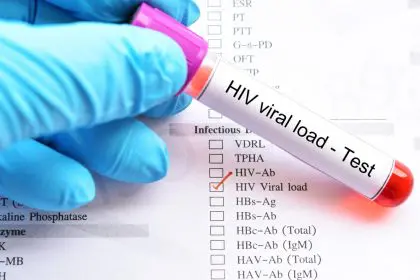San Francisco’s streets tell a story of transformation that city officials never intended to write. What began as a compassionate shift away from criminalizing drug use has evolved into an unexpected challenge that’s reshaping how thousands of people access life-saving treatment and support services.
The city’s progressive approach to drug policy has moved decisively away from punishment-based responses toward treatment-first strategies. However, this well-intentioned evolution has created unforeseen consequences that are rippling through neighborhoods already struggling with addiction, homelessness, and mental health crises.
Residents across San Francisco are witnessing the real-world impact of these policy changes in ways that extend far beyond city hall meetings and policy papers. The transformation affects everyone from individuals seeking recovery to families navigating public spaces to business owners dealing with increased visible drug use.
The quiet revolution in drug enforcement
San Francisco has gradually implemented policies that prioritize health interventions over criminal justice responses to drug-related issues. This approach represents a fundamental shift in how the city views addiction — as a public health challenge rather than primarily a criminal matter.
City officials have expanded access to harm reduction supplies, deployed mobile outreach units throughout affected neighborhoods, and established 24-hour drop-in centers where people can receive immediate support. These changes reflect growing recognition that traditional enforcement approaches often failed to address underlying addiction issues.
The reduced emphasis on arrests for nonviolent drug offenses has altered the landscape for both users and law enforcement. Police officers now focus more on connecting people with services rather than processing them through the criminal justice system.
However, this transformation has created unexpected ripple effects throughout the city’s treatment infrastructure. The pathways that once guided people from arrest to court-mandated treatment have largely disappeared, leaving many individuals without clear routes to recovery services.
Unintended consequences emerge from good intentions
The elimination of traditional enforcement pathways has created significant gaps in how people access treatment services. Previously, many individuals entered recovery programs through diversion programs or court-mandated rehabilitation, which provided structure and accountability for beginning treatment.
Now, with fewer arrests occurring, people must rely primarily on self-referral or connection through street outreach teams. While this approach respects individual autonomy and reduces criminalization, it has created bottlenecks in a system that wasn’t designed to handle increased voluntary demand.
Healthcare providers throughout the city report dramatic increases in wait times for treatment services. The Tenderloin and Mission District, areas with high concentrations of drug use, have seen particularly acute delays as demand outpaces available resources.
Street outreach teams find themselves overwhelmed as they attempt to connect with individuals who might have previously entered treatment through judicial channels. These teams, while dedicated and skilled, lack the capacity to reach everyone who could benefit from their services.
The treatment access bottleneck intensifies
Clinics across San Francisco are experiencing unprecedented demand for services as more people seek help voluntarily rather than through court orders. This increased demand has created waiting lists that can stretch weeks or months for critical services like medication-assisted treatment.
The delay in accessing treatment represents more than inconvenience—it can mean the difference between life and death for individuals struggling with opioid addiction. When people are ready to seek help, any delay can result in continued drug use, overdose risk, or loss of motivation to pursue recovery.
Mental health services face similar pressures, particularly for individuals dealing with dual diagnoses of addiction and psychiatric conditions. These complex cases require specialized care that’s already in short supply, and the increased demand has strained an already fragile system.
Housing instability, trauma, and other social determinants of health complicate treatment access even further. Many individuals struggle to maintain consistent engagement with services when they lack basic stability in their daily lives.
Harm reduction success meets follow-up failures
San Francisco has earned recognition for its comprehensive harm reduction programs, including widespread distribution of naloxone, clean syringes, and overdose prevention training. These interventions have undoubtedly saved lives and reduced disease transmission among people who use drugs.
However, the city’s success in harm reduction hasn’t been matched by corresponding improvements in treatment follow-up. Many people who receive life-saving interventions during overdoses or crisis situations don’t successfully transition to longer-term recovery services.
The gap between emergency intervention and sustained treatment represents a critical missed opportunity. When someone survives an overdose or reaches out for help, that moment of crisis often represents peak motivation for change—but without immediate access to treatment, that motivation can fade quickly.
Healthcare providers report seeing the same individuals repeatedly for crisis interventions without being able to connect them to ongoing care. This revolving door pattern reflects systemic capacity issues rather than individual treatment failures.
Community impact becomes increasingly visible
Residents throughout San Francisco have reported observing more visible signs of drug use in public spaces over the past year. This increased visibility coincides with the policy changes and reflects the complex dynamics of moving away from enforcement-based approaches.
While some community members call for stricter policing to address these concerns, others advocate for scaling up treatment access and support services. These different perspectives reflect broader debates about how cities should address drug-related issues in public spaces.
Business owners in affected neighborhoods face particular challenges as they balance compassion for individuals struggling with addiction against concerns about customer safety and business viability. These competing interests create tension that policy makers must navigate carefully.
The visible impact of drug use affects families with children, elderly residents, and other community members who may feel unsafe or uncomfortable in certain public areas. Addressing these concerns requires solutions that consider both individual needs and community wellbeing.
Infrastructure struggles to match policy ambitions
The fundamental challenge facing San Francisco lies in the mismatch between policy aspirations and system capacity. While the city has successfully reduced criminalization of drug use, it hasn’t proportionally increased treatment infrastructure to handle the resulting demand.
Low-barrier care sites throughout the city are operating at capacity, with limited ability to accommodate additional clients. These facilities provide essential services but can’t expand quickly enough to meet growing demand.
Medication-assisted treatment programs face particular strain, as waitlists for services like Suboxone and methadone have grown significantly. These evidence-based treatments are highly effective when accessible, but delays in access can undermine their effectiveness.
Mental health services for individuals with dual diagnoses face even greater challenges, as these complex cases require specialized expertise and intensive resources. The shortage of qualified providers limits the system’s ability to serve this vulnerable population effectively.
The human cost of system limitations
Behind every statistic about wait times and capacity issues are real people whose lives hang in the balance. The delays in accessing treatment don’t just represent administrative challenges—they reflect missed opportunities for individuals ready to begin recovery.
Families throughout San Francisco watch loved ones struggle to access services while battling addiction and associated health issues. The emotional toll of these delays extends beyond individuals seeking treatment to include their family members, friends, and broader social networks.
Healthcare providers working in the system experience frustration and burnout as they attempt to serve more people with limited resources. These dedicated professionals often work beyond their capacity while knowing that many people who need help aren’t receiving adequate services.
The community impact extends to first responders, who find themselves responding repeatedly to overdoses and crises involving the same individuals who can’t access ongoing treatment. This pattern strains emergency services while failing to address underlying issues.
Future plans and persistent challenges
City officials recognize the current limitations and have announced plans for additional mobile mental health units and round-the-clock care facilities. These expansions represent important steps toward addressing current capacity issues, but their implementation remains in early stages.
The effectiveness of these planned interventions depends heavily on adequate funding, staffing, and community integration. Previous expansions have sometimes fallen short of expectations due to implementation challenges and resource constraints.
Building community trust in the treatment system requires demonstrating that services are available when people need them most. The current delays and capacity issues can undermine confidence in the system’s ability to provide reliable support.
Long-term success requires not just additional facilities but also improvements in coordination between different service providers, better integration of housing and mental health services, and sustained political and financial commitment to supporting the expanded infrastructure.
Lessons for other cities watching San Francisco
San Francisco’s experience provides valuable lessons for other cities considering similar policy changes. The importance of building treatment capacity alongside enforcement policy changes becomes clear through San Francisco’s current challenges.
The city’s experience demonstrates that good intentions and progressive policies require substantial infrastructure investment to achieve desired outcomes. Without adequate capacity, policy changes can create new problems even while solving others.
Other municipalities can learn from San Francisco’s approach to harm reduction while also planning for the treatment capacity needed to support individuals ready for recovery. This planning should occur before rather than after policy implementation.
The complexity of addressing drug-related issues requires coordination across multiple systems, including healthcare, housing, mental health, and social services. Cities must consider these interconnections when planning policy changes.
Building sustainable solutions
Addressing San Francisco’s current challenges requires acknowledging both the successes and limitations of current approaches. The city’s commitment to treating addiction as a health issue rather than solely a criminal matter represents important progress that should be preserved.
However, this commitment must be matched by corresponding investments in treatment infrastructure, provider training, and service coordination. Building effective systems requires sustained effort and resources over time.
Community engagement and feedback are essential for developing solutions that work for both individuals seeking treatment and broader community members affected by drug-related issues. These conversations require honest acknowledgment of current limitations and realistic timelines for improvements.
The stakes of getting this right extend far beyond San Francisco to influence how other cities approach similar challenges. Success could provide a model for compassionate, effective drug policy, while continued struggles might discourage other communities from pursuing similar approaches.


















